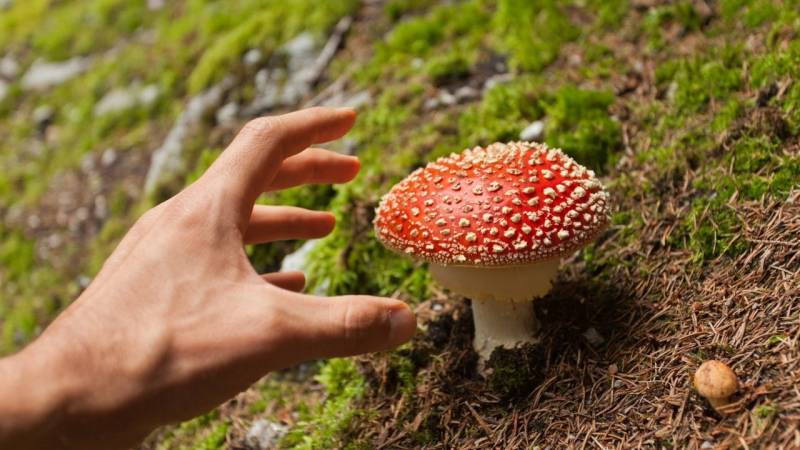
Dangers in the forest – on these 15 things you should pay attention.
👉 The key facts from this guide
- Tools: Safe handling of knives, axes, and saws is important to avoid injury.
- Animals: Wild animals can be dangerous, especially when they have offspring. Ticks and parasites also pose a threat.
- Deadwood: When setting up a camp, pay attention to rotting branches ("widow-makers") that could fall and cause injury.
- Weather: Extreme weather conditions such as rain, sun, thunderstorms, water, ice, hail, and snow can be dangerous and require appropriate preparations.
- Fire: A fire can be both a source of warmth and a source of danger. It should always be handled safely and responsibly.
- Plants: There are poisonous plants that look very similar to edible plants and can therefore be easily confused.
The forest whispers. In every rustle of leaves, in every crack of a branch, a story hides.
Some tell of life, others of dangers lurking invisibly between the trunks – animals, rotten trees, sudden weather changes, or hidden diseases.
Wouldn't it be fantastic to understand this language? To know exactly how you need to behave to enjoy the gifts of the forest, like when gathering wild plants, without risk?
That's what today is about. We will demystify the challenges of the forest, so that you can face them with knowledge and respect.
Let's start the adventure.
First Forest Rule: Respect is your best compass
I used to be reckless. I thought courage meant ignoring risks.
Until one day, reality taught me a lesson with the sharpness of ground steel.
In an unwary moment, blinded by routine, I swung the axe – and hit my leg.
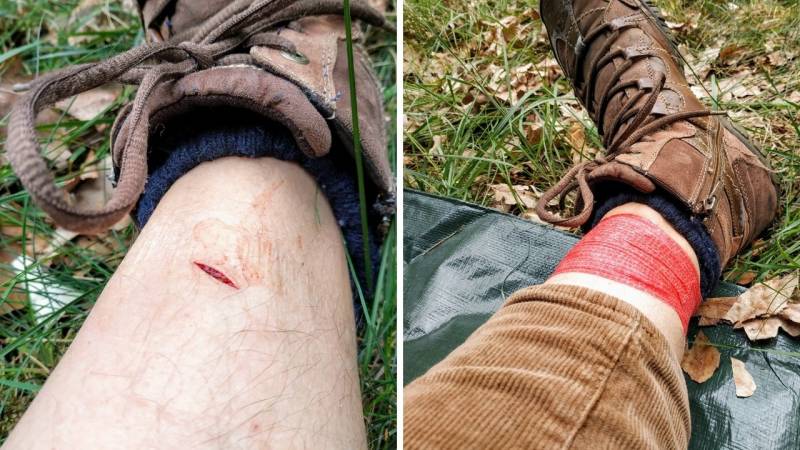
An ice-cold shock ran through me. My son was there, and the only thing I thought was: "Stay calm. Don't panic him." The bleeding wasn't heavy, but the gaping, 2 cm long gash in my shin was an ugly sight. Fortunately, the bone was spared.
A paramedic friend advised me to have the wound stitched, but no doctor in our area was open anymore. For the next three days, the pain throbbed with every step. However, the wound closed, healing cleanly.
Today, a fine, white scar reminds me daily of this lesson. It is my personal compass, keeping me from recklessness. And it leads us directly to the first big challenge in the forest...
1. Your Tools: Hungry Helpers
Your axe, your knife, your saw – they are not dead objects. They are hungry tools, burning to split and shape wood.
But they don't distinguish between a branch and your finger. Safe, conscious handling of them is not an optional item on a list – it is the foundation of everything.
This also includes the realization: A dull blade is a traitor. It doesn't bite into the wood, but slips, often with devastating force in an unforeseen direction. The myth of the "safe" dull knife has already led to countless injuries.

Once the last chip has fallen, once your work is done, the tool belongs back in its home.
The blade in the sheath, the saw blade folded in.
For accidents are rarely coincidental. They are the result of ignorance or a brief moment of carelessness.
2. The Animals: Silent Inhabitants with their Own Rules
Suddenly, the world around you freezes. No bird chirps anymore.
Out of the corner of your eye, you see a movement – a sow with her piglets, rooting through the ground grunting. Or you catch a fleeting glimpse of a wolf, silently crossing the path.
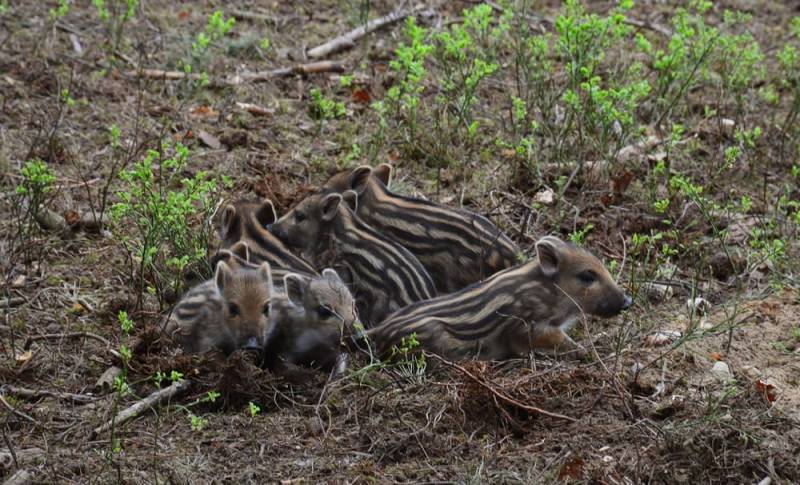
In Germany, direct attacks by large animals are rare, but respect and knowledge are crucial. A mother's instinct to defend her young is one of the strongest forces of nature.
However, the greatest danger often lurks in the small things. The tiny tick, waiting in the tall grass for a host. A carcass that has contaminated a body of water.
Never touch dead animals. Diseases such as rabbit fever (tularemia) or the avian influenza virus (H5N8) can be transmitted this way.
Even the traces they leave behind – droppings (feces) and pellets (regurgitated balls) – should be handled with caution. They are fascinating testimonies of forest life, but also potential carriers of viruses or bacteria.
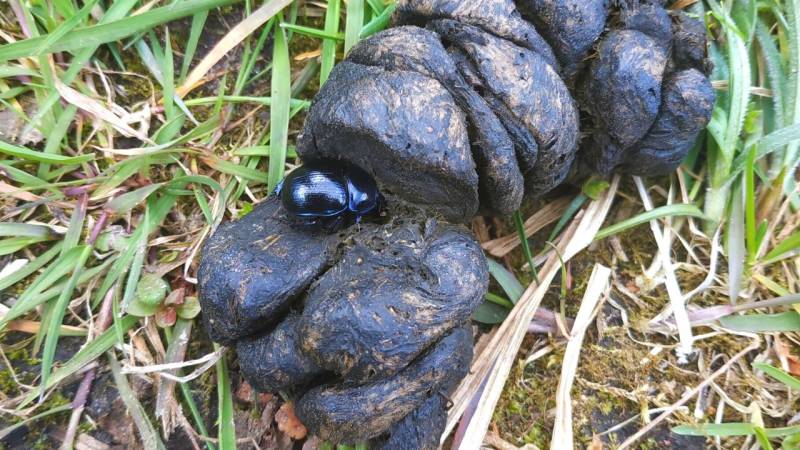
When collecting owl pellets for examination, wear gloves. A 14-day quarantine at room temperature or a short "baking session" in the oven makes them safe for closer inspection.
3. Deadwood: The silent giants above you
Before you hang your hammock or set up your tent, tilt your head back and listen.
Do you hear that faint, treacherous creaking in the wind? Do you see that thick branch up there, already losing its bark and standing pale against the sky?
That is a "widowmaker". It's just waiting for a strong gust of wind or the weight of wet snow to fall.
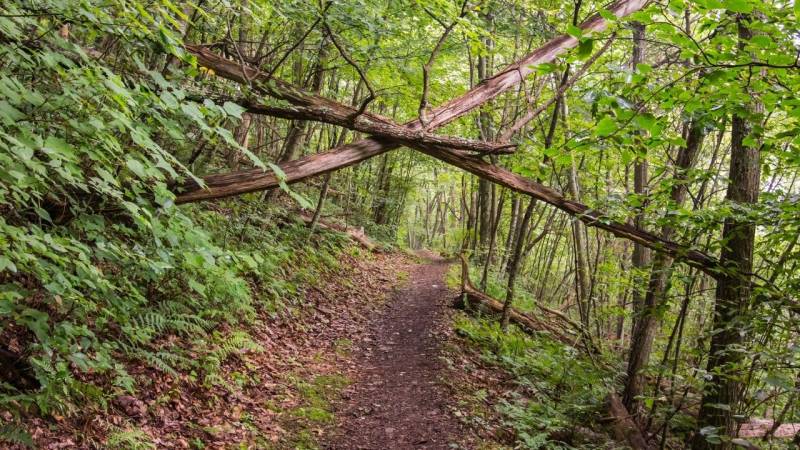
Especially trees with soft wood, like poplars, willows, or linden trees, give way quickly. But even a mighty oak or beech can carry rotten branches. Your gaze upwards is your most important life insurance for a quiet night.
Read also: How to find the ideal location for your Bushcraft camp
4. The weather: The true ruler of the forest
You are just a guest. The true ruler of the forest is the weather. It writes the rules, and you would do well to learn its language.
The Faces of Weather
- The cold rain: A sudden drop in temperature announces it, then the first cold drops lash your skin. In summer, it's refreshing; in the cooler seasons, it's the onset of dangerous hypothermia. Your tarp, your poncho – they must be handy, not buried deep in your backpack.
- The scorching sun: It blinds and warms, but it can also sting mercilessly. Sunstroke robs you of your clear mind. Seek the shade of old trees; give yourself breaks. A simple hat is your best protection.
- The rumbling thunderstorm: The sky darkens and rumbles in the distance. This isn't a spectacle, it's a warning. Lightning seeks the highest point. Don't be that point. Flee from open fields into the forest (but not under single, tall trees) or crouch near a power pole.
All details on correct behavior can be found in my guide: "Is it dangerous to camp during thunderstorms?"
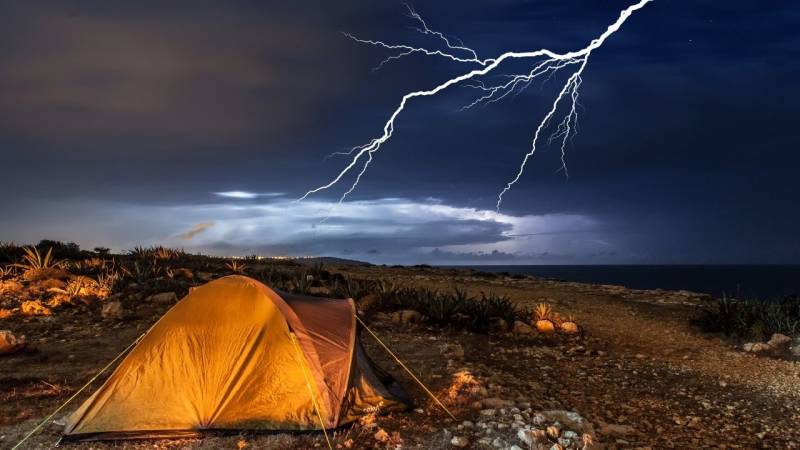
- The Roaring Water: Heavy rain transforms the gentle stream where you set up camp into a raging torrent. In the mountains, flash floods threaten. Never build your camp directly in a hollow or too close to the bank.
- The Treacherous Ice: Invisible and slick as glass, it covers paths and stones. One wrong step, and a bone is broken. In winter, good shoes and a watchful, slow pace are essential.
- The Brutal Hail: Imagine the sky itself throwing stones at you. Hailstones can reach the size of tennis balls and possess immense destructive power. The largest measured stone weighed 766 grams in Kansas in 1970. Immediately seek shelter under a rock overhang or in a dense coniferous forest.
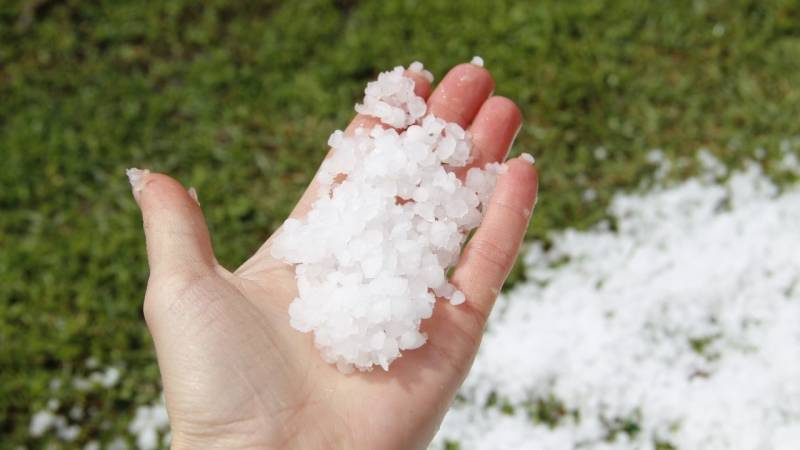
- The Crushing Snow: It paints an enchanting winter landscape, but it also brings a biting cold that relentlessly drains the warmth from your body. Warm clothing is a must. Anyone sleeping outdoors in winter fights a constant battle for every degree of body warmth. A snowstorm can disorient you in minutes or bury your camp.
- The Swallowing Darkness: It doesn't come; it creeps up. It swallows contours, transforming familiar paths into a labyrinth of shadows. Every sound makes you flinch. And all this just because the small, life-saving headlamp is buried deep in your backpack. From 3 PM in winter, it belongs in your pocket.
Reading Tip: 8 Tips for better hiking in winter
5. The Fire: Friend and Wild Beast at the Same Time
The crackling of the flames, the dance of the sparks, the cozy warmth on your skin – a campfire is the heart of your camp. But it is also a wild creature.
It lurks and hungers to spread. One careless second, and the flame licks at your trouser leg or spreads to the dry leaves.
Did you know that in fires, most people don't burn but suffocate from smoke?
Treat your fire with the respect it deserves:
- Never inhale the smoke.
- Only light it in well-ventilated areas, never in a cave.
- Check the space above the fire – are there flammable branches hanging there?
- Create a safe fire pit, free from flammable material.
- Always have enough water or sand ready for extinguishing.
- Never, ever leave it alone.
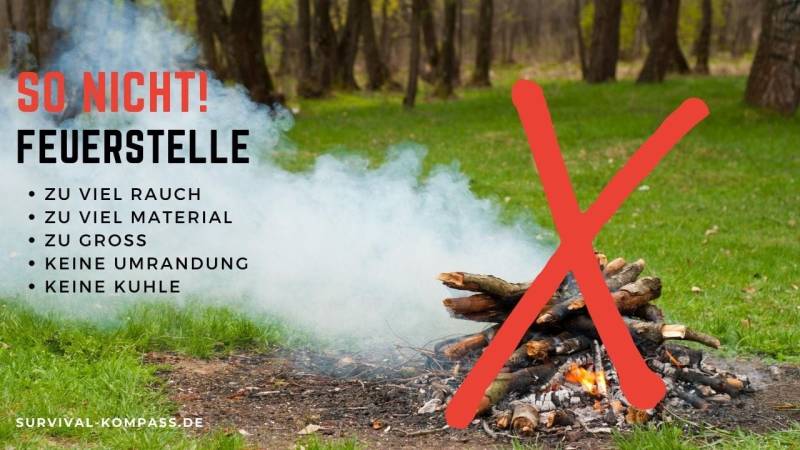
Become a fire professional with these guides:
- The Bushcraft Fire Pit: How to Build it Perfectly
- How to Light a Fire with Just One Match
- How Do I Light a Fire? [10 Steps to Success]
6. Plants: Delicious Food and Deadly Traps
The forest is a laid table full of vitamins and flavors. But alongside the delicacies, the tempters also grow – poisonous doppelgangers that look deceptively similar to their edible relatives.
You find a plant that looks exactly like wild garlic. The smell seems to be right. But what if it's actually the autumn crocus, whose leaves have sneaked in among them?
Are you ready to risk everything for this one dinner? To trade your curiosity for an agonizing death by respiratory paralysis?
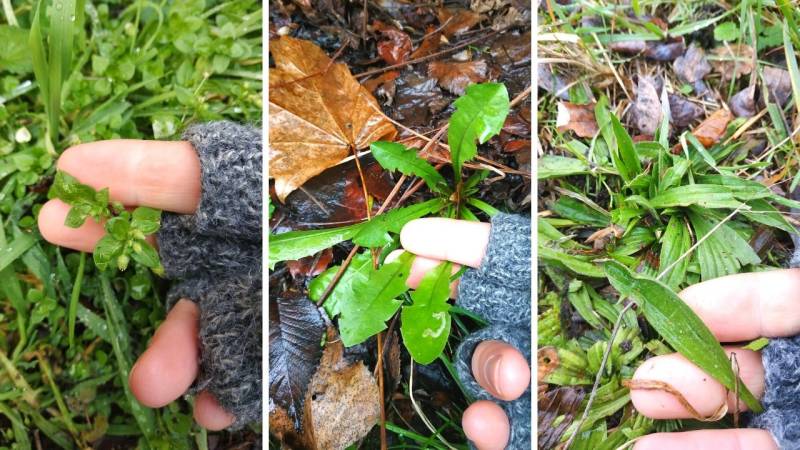
The golden path to the safe collector is paradoxical: first, learn the poisonous plants! Only when you know the enemy can you safely recognize the friend.
- My Pocket Field Guide to the 11 Most Dangerous Poisonous Plants is your first, most important step.
- After that, my ultimate guide opens the door to the forest's pantry: "Edible Plants: this emergency food you can find in the forest (List + Pictures)"
7. Feathers: Delicate beauty with invisible risk
A shimmering feather on the moss – a small work of art by nature. But can it be dangerous? The risk is minimal, but it exists. Viruses can adhere to feathers, especially in areas with reported bird flu.

Especially children who like to put found treasures in their mouths have a higher risk. The viruses on the hand are harmless, but as soon as they enter the body via the mouth or nose, it becomes critical.
The simplest protective measure here is the best: thorough handwashing.
P.S.: Here you can find more answers about bird flu.
8. The Terrain: The Forest as an Obstacle Course
For the untrained foot, the forest is a single obstacle course. Roots become tripping hazards, soft ground saps strength, dense undergrowth tugs at clothing.
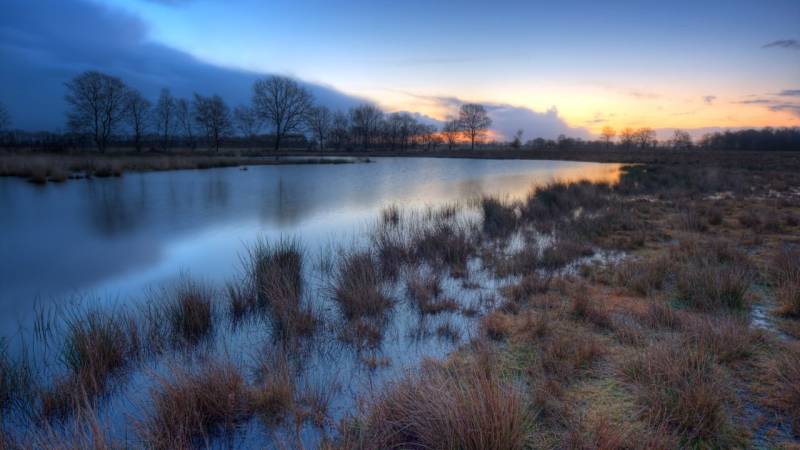
And these are just the small challenges. A steep scree field or a treacherous swamp lurking under a thin layer of vegetation can quickly become life-threatening traps.
Your most important tool here: your eyes. Watch where you step. Every step counts.
9. Hubris: The worst compass
Do you remember that one boy in school? The one who was always better at everything, who considered fear a weakness, the daredevil?

Overconfidence is like a bad compass. It shows you a direction, but almost always the wrong one – straight into danger.
Those show-offs who were the first to ride a bike hands-free were also the first to do it without teeth. In the forest, prudence is your greatest strength. It builds confidence and brings you and your group safely to your destination.
10. Fear and Panic: The Loud Noise in the Head
Your heart starts racing. Your hands get clammy, and your grip on your knife tightens. You notice tunnel vision setting in. That is the moment you put the tool down. The moment you pause.

Fear is an archaic signal. But panic is its loud, stupid brother. Panic leads to sprained ankles, deep cuts, and fatal misjudgments.
If you feel it rising, take a step back. Breathe deeply. Name three things you see. Feel the forest floor beneath your feet. Don't let yourself be rushed – neither by others nor by yourself.
11. Allergies: The enemy in your body
Do you really know your body's reactions? I remember a camp participant. He had thoroughly sprayed himself with mosquito repellent. But as he sat by the campfire, his trouser legs slid up and exposed his ankles. An invitation for every mosquito in the vicinity.
After a few minutes, his ankles were a battlefield of countless bites. His body, unfamiliar with this massive attack, reacted with severe allergic swelling.

In the end, he could barely walk. A simple allergy tablet was his salvation. This small pill belongs in every First Aid Kit, especially if you don't yet know how your body reacts to intense encounters with nature.
12. Water: Crystal Clear Deception
A crystal-clear stream babbles over moss-covered stones. An invitation to fill the bottle and quench your thirst.
But in the invisible, danger dances. Bacteria, parasites, and viruses. Even if it often goes well – never take this risk.
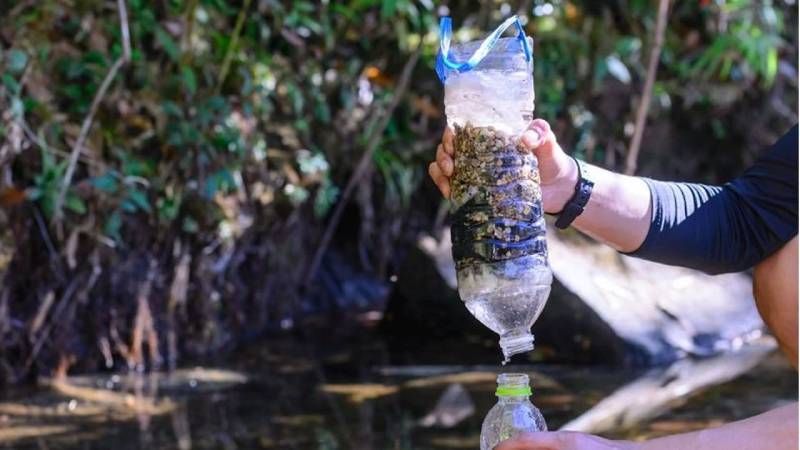
Many common water filters reliably remove bacteria and protozoa, but not the much smaller viruses. To make water truly safe, boiling is the gold standard method. Alternatively, there are special water purifiers that can also eliminate viruses.
And it goes without saying: water near cities, industry, or fertilized fields is taboo. You cannot boil away chemical contaminants.
PS: Learn everything about the elixir of life in my ultimate guide: "Finding, collecting, filtering, and making drinking water potable"
13. Orientation: The Thrill of the Trail
You have followed a track, completely engrossed in the moment. The world around you has disappeared. Then you look up.
And you stand in the middle of nowhere. No path. No familiar tree.
Only forest, in all directions.
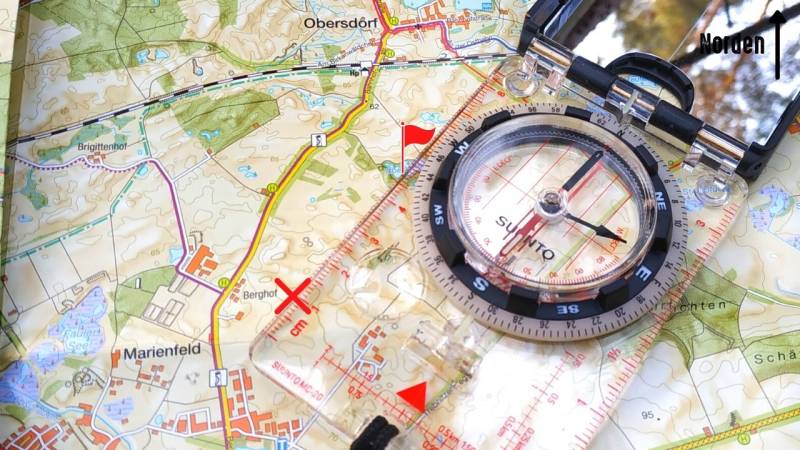
This is what happened to me while mushroom picking. I pushed my way into the undergrowth, found a rich haul, and completely lost my sense of direction in the process.
A cold feeling of panic crept up my neck. No cell reception. It felt like an eternity before I found my way back.
Your insurance: a map and a compass. And a smartphone with a full battery and offline maps. Never rely solely on technology.
Reading Tip: How do I use a compass with a map? – The complete beginner's guide with video
14. Hunters: The Silent Shadows of Twilight
Twilight casts a blue veil over the forest. It is the hour of the hunters.
If you are out and about during this time or even sleeping outdoors, special caution is advised. In the fading light, a crouching figure can easily be mistaken for a wild animal.
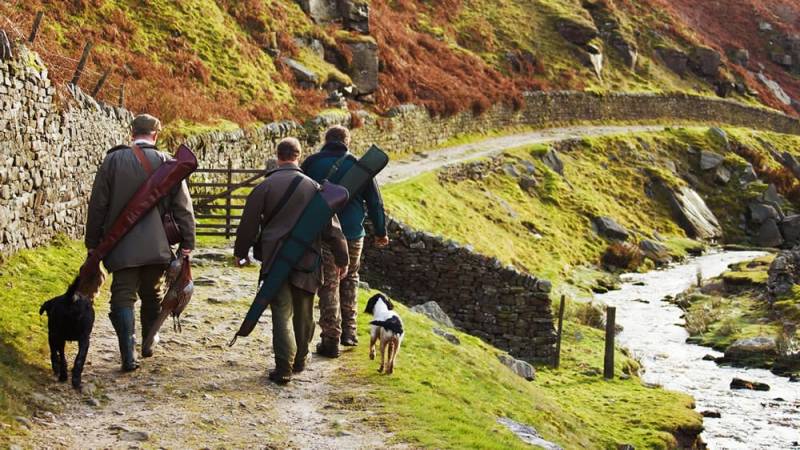
The greatest danger is not targeted shots, but ricochets – bullets that bounce off a stone or a hard tree.
Make yourself visible. A hat in a signal color or a reflective band on your backpack can make all the difference in these critical minutes.
My creative tip of putting a note on a high seat, while well-intentioned, carries the risk of a warning for illegal wild camping.
Visibility is the safer method!
Reading Tip: Is sleeping in the forest allowed? [Penalties and Alternatives]
15. Mushrooms: A Russian Roulette for the Uninitiated
My advice here is short and uncompromising: stay away from it if you are not an absolute, certified expert.
Even collectors with 30 years of experience have been poisoned and died. A small moment of inattention, a mushroom that suddenly looks different in a new place – that's enough.
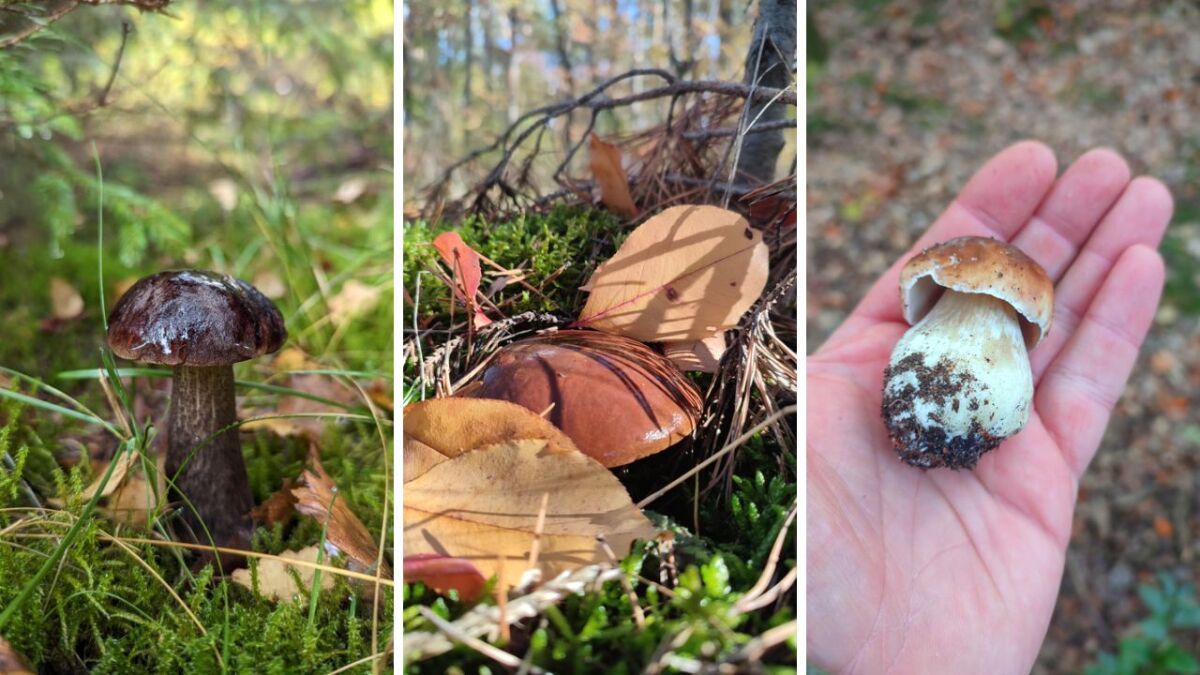
If you do, be your taster.
Don't poison your whole family. Someone has to be able to drive you to the hospital, after all.
For mushrooms, the same brutal rules apply as for poisonous plants: one mistake can be your last.
And now, take a deep breath. Go through this list in your mind. It's not about instilling fear. It's about exchanging knowledge for uncertainty. Respect for recklessness.
Have there been situations in your life that you now see with different eyes? A decision you would never make again?
Please let me know in the comments. Your experience is a valuable lesson for all of us.
May your time in the forest always be safe and full of insights. Enjoy this wonderful world with open senses and a keen mind.


Author of the guide
Martin Gebhardt
Hey, I'm Martin. On my blog, you will learn the basics and numerous details about living in the wild. I think survival, bushcraft and the good life in nature are the keys to happiness. Find me here on Instagram or on YouTube. You can find more about my mission on the About Me page.
Was this guide helpful?
42 people found this guide helpful.
5.00 out of 5 points (42 Ratings)
Comments (0)
This post may contain affiliate links. So if you click on the links and make a purchase, I will receive a small commission at no additional cost to you. Click here, to learn more about it.


